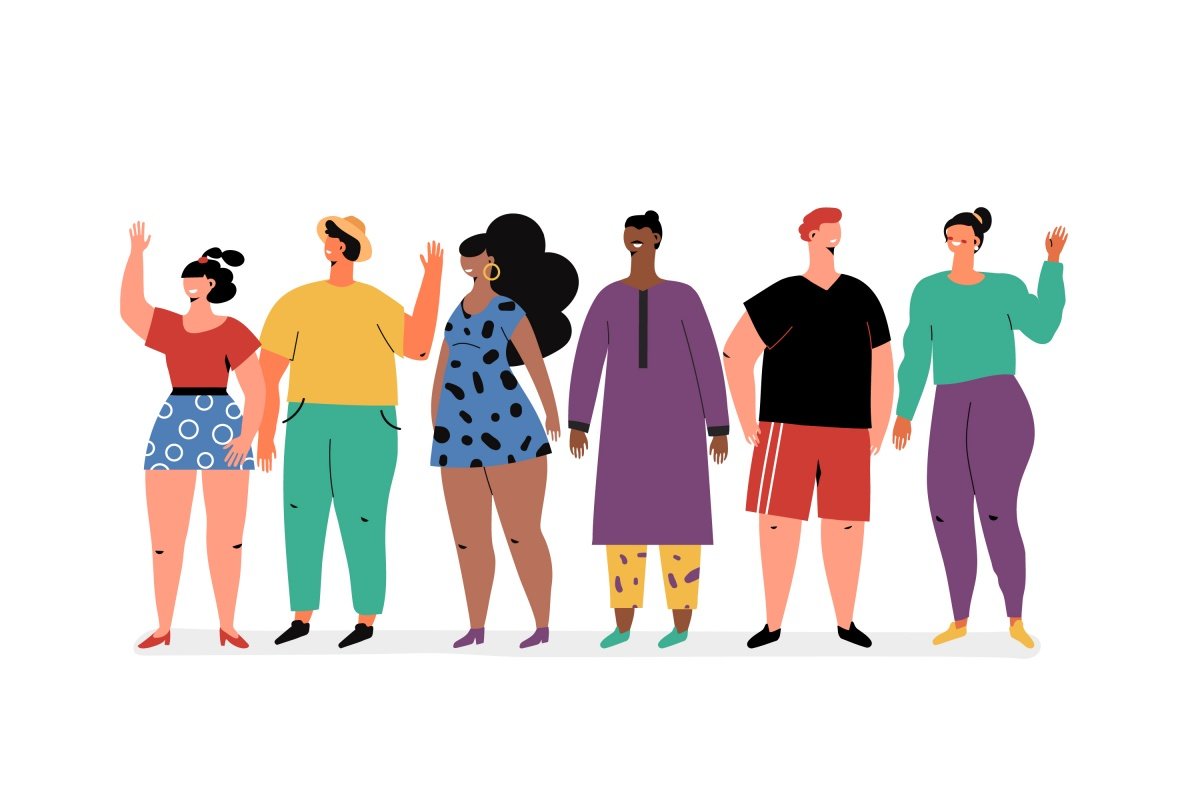Eating Disorder Myths
Common Misconceptions About Eating Disorders
and The People Who Have Them
Of all the eating disorder myths, the most common is the idea that the only people who get eating disorders are young, white women. You might even be able to see the picture in your head now of a frail white girl, sick and sad.
Here’s the truth: eating disorders affect people of all genders, ages, races, ethnicities, body shapes and weights, sexual orientations, and socioeconomic statuses. The problem with eating disorder myths is that it means people who need help get overlooked and left out. Let’s dispel some of these common eating disorder myths.
Common Eating Disorder Myths
When most people conjure up a mental image of someone with an eating disorder, they picture a white, adolescent, underweight girl. By default, she is presumably cisgender, able-bodied, and heterosexual; this is vividly confirmed by a simple Google Image search for “person with an eating disorder.”
Although this stereotype permeates both our culture and our medical system, it is extremely inaccurate. While there are many young, white girls struggling with Anorexia who need and deserve quality treatment to survive their illness—many of whom cannot afford it—that subgroup is far from the majority in any way that would justify this common misconception.
The following eating disorder statistics highlight both the inequities present in the existing eating disorder world and the inaccuracy of our cultural understanding of eating disorders.
Myth: Only wealthy people get eating disorders.
Truth: Eating disorders are common in many marginalized populations.
Less than 6% of people with eating disorders are medically underweight. (source)
Binge Eating Disorder is more common than Anorexia Nervosa and Bulimia Nervosa combined. (source)
25-40% of people with eating disorders are men or boys. (source)
Transgender and gender nonconforming (TGNC) individuals are at least four times as likely to struggle with an eating disorder than their cisgender counterparts; however, some experts expect that number is likely much higher, with TGNC individuals eight times as likely to struggle with an eating disorder. (source)
Binging and purging behaviors are more common among Black and Latina women than white women. (Georee source, Swanson source)
While eating disorders typically onset in adolescence or early adulthood, they often persist into older adulthood - especially when untreated. At one eating disorder program, at least 13% of people in their residential treatment for eating disorders are aged 41-55
Myth: Anyone get help for an eating disorder.
Truth: Eating disorders do not discriminate, but treatment does.
Black women are 25% less likely to be diagnosed as white women with the same eating disorder behaviors. (source)
High-weight people with eating disorders are exponentially more likely to be encouraged to engage in eating disorder behaviors (restriction, over-exercise, etc) to lose weight than to be screened for an eating disorder by their doctors. (source)
Only 17% of Black women, 41% of Latina women, and 44% of white women are accurately diagnosed by doctors when presenting with an eating disorder. (source)
There are Consequences to stereotypes
These eating disorder myths are dangerous. For example, one of the main reasons we see such a singular image and hear such a narrow story is that affluent, young, white cis women with Anorexia Nervosa are:
More likely to be appropriately diagnosed by a medical provider, due to lack of training and implicit bias among clinicians
More likely to have their treatment covered by their insurance, due to “medical instability” requirements for treatment authorization
More likely to be able to afford treatment, due to economic inequities in the U.S.
More likely to benefit from treatment, because people with their shared identities were the focus of the eating disorder research which has become the template for “evidence-based care.”
As a result, these individuals are more likely to heal, and become recovery advocates, and eating disorder providers themselves. This cycle of privilege has kept the eating disorder stereotype intact despite its inaccuracy and has contributed to the homogeneity of the eating disorder field in the U.S.
That’s why our mission at Project HEAL is to make sure everyone—no matter their size, gender, race, or wealth status can get the help they need. Part of that is dispelling these eating disorder myths. The more everyone knows, the more we can change this reality.
Feature image by Freepik


